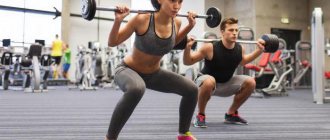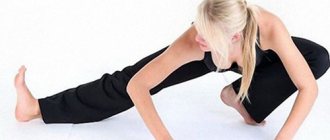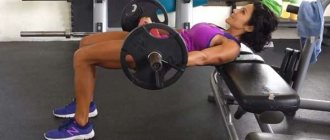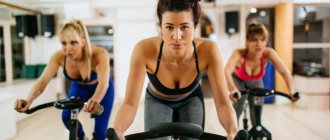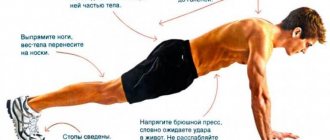Everything you need to know
Endurance allows people to exercise at a certain intensity and for an extended period of time (think of a marathon). There are many factors that combine to determine an athlete's endurance level, but two that are of key importance are VO2 max and anaerobic threshold.
VO2 max is the maximum rate at which an athlete's body can absorb oxygen during exercise. Measuring this parameter is the most popular method for determining the level of physical fitness, however, it is not the most accurate. Although endurance is largely genetic, oxygen uptake can be improved through specific training such as high-intensity interval training.
Another important parameter that determines an athlete's endurance level is the anaerobic threshold, or the level of physical activity at which lactate begins to accumulate in the muscles. Fortunately, almost any athlete can improve both of these parameters. In order to increase your anaerobic threshold, and therefore your ability to train harder for a longer time, you need to run at a moderate pace, according to renowned sports expert Noam Tamir.
Endurance athletes have a higher proportion of slow-twitch muscle fibers, which use oxygen evenly to generate energy. Long-distance running develops slow-twitch muscle fibers, which continuously provide energy and allow you to more effectively fight fatigue. Also, long running allows you to convert fast muscle fibers into slow ones, which also improves endurance.
The best masks for running
To achieve good results, you need to train with the best. This fact has long become an axiom in sports. These could be the best partners, opponents, coaches or simulators. After all, an athlete with initially better starting conditions has a greater chance of achieving success.
The best in the niche of training respirators, according to most, is the “elevation training mask” breathing mask. Yes, some athletes prefer the “bass rutten o2 trainer”. But as they say, there are so many people, so many opinions. So everyone must decide for themselves what suits them best.
These samples are suitable for all types of exercise, be it strength training or a simple jog. Although their breathing restriction system is different, their functions are the same.
Let's look at these samples of masks for cardio training in more detail.
Elevation training mask 1.0
This running oxygen mask is the very first in the line of elevation training masks. It is a rubber gas mask. But instead of a filter (can), it has three nozzles, with different numbers of holes (1,2 and 3). By changing these nozzles, you can regulate air access.
According to reviews from many athletes, this sample is the most “hardcore” (difficult to use) accessory. And beginners should refrain from choosing this device.
The material from which the exercise machine is made is rubber. And for some athletes, this fact is a minus. But the fixation on the face of the elevation training mask, version 1.0, is the tightest. During training, it does not fly off the face and ensures complete tightness.
Elevation training mask 2.0
The most common oxygen mask for running. Lighter than the previous version and has a stylish design.
The product package includes:
- instructions for use;
- fixing case;
- additional fixing strap;
- rubber mask base;
- external and internal filters that are adjustable.
The base, although rubber, is made of a material that is neutral for the skin. This fact distinguishes the original “elevation training mask” masks from fakes.
The authenticity of the mask is also verified on the company’s official website. To do this, you must enter a special number, which is located in the instructions for the accessory.
The sample is presented in the form of a respirator, which increases the load on the athlete’s respiratory organs.
Bass rutten o2 trainer
This sample cannot be called a mask for breathing while running. He looks more like the mouthguard of a boxer or MMA fighter, which is not surprising. After all, the developer of the O2 trainer is the former UFC heavyweight champion and 3-time Pancrase champion, Sebastian “Bas” Rutten.
The peculiarity of this simulator is that it does not interfere with exhalation during training, but only makes it difficult to inhale. According to the developer, this will release carbon from the lungs without residue. Which leads to greater training results.
The accessory is equipped with replaceable nozzles that regulate the amount of oxygen supplied.
Action Plan for Guaranteed Improvement in Endurance
Try these tricks to take your stamina to the next higher level. With these training and nutrition tips, you'll be well on your way to completing an Ironman ultramarathon in the near future.
- Get complete rest. In order to work long and intensively, you need to have fresh strength. Famed sports expert John Mandrola said, “Train intensely on training days, rest on rest days, and never train multiple days in a row without adequate rest.”
- Eat right. When it comes to nutrition, carbohydrates are key because the body uses glycogen as an energy source. When glycogen runs out, the body switches to other sources of energy and begins to burn fat. During prolonged cardio training, you should consume 30 to 60 grams of carbohydrates per hour, depending on your body weight. Research also shows that combining protein and carbohydrates in your diet can improve endurance and reduce muscle loss. It has been noted that the optimal balance of proteins, fats and carbohydrates can vary significantly among different athletes. Experiment to find the optimal combination that works best for you.
- Use high-intensity interval training, including in combination with traditional training. Try running on stairs or on a treadmill at varying speeds, but remember that these workouts require full recovery due to their intensity.
- Add strength training. Remember that load variability is important for developing endurance. Strength training will strengthen your bones, ligaments, tendons and muscles and improve your overall fitness. Combine aerobic training with kettlebells, dumbbells, and bodyweight exercises.
- Turn on the music. It has been observed that listening to music has a positive effect on endurance and cannot in any way harm your training. Music helps you mentally gather yourself when you need it most, and endurance athletes have a well-developed mind-muscle connection.
- Work on what is weaker. People often find their own workout routine and stick to it. Mandrola advises changing it up to develop endurance: marathon runners should run at speed, if you run on a flat surface, run uphill. Develop in parallel in what you are weak in, this will give your body an impetus for growth.
- Drink beet juice. There is a study that found that eating nitrate-rich beets helps improve endurance by 16%. It remains unclear whether other nitrate-containing products have the same effect. The day before the race, eat pasta with beetroot juice, but remember that the juice can be high in sugars, be careful.
- Train smart. The principle of gradual adaptation in sports is a systematic increase in mileage and speed. Train safely - run on a flat surface, drink enough fluids, these tips will help you avoid injuries and ultimately increase your endurance.
Why do you need a running mask?
Using a breathing simulator with a healthy lifestyle is compared to jogging in high altitude conditions. How does such a device work?
The universal sports respirator includes an elastic band to secure the head. Frame, sleeves. It comes with 7 resistance caps and 3 flow membranes. They allow you to adjust the air resistance. The manufacturing material does not cause an allergic reaction, at the same time it is dense, elastic and perfectly breathable. Secure with straps and Velcro. Everything for a comfortable lesson
Before purchasing, pay attention to the size. Weight is taken into account here
The girl weighs less than 67 kg, then a sports mask size “S” is suitable. “M” is for people from 69 to 100 kg; above it is better to take “L”. Depending on the creation of altitude conditions from 1 km to 5.5, different valves are used. At an altitude of one kilometer from sea level, adjust the mask, open the membranes and attach valves with 4 holes; in the three kilometer position, a valve with two holes or with one. The height is 5 km, one membrane of the running mask is closed, a valve with one hole is used. This is already for professional athletes.
As before any start of a training program, a warm-up is provided. So here, too, it is imperative to prepare the body to work in unusual conditions. Put it on, set the minimum resistance, begin to inhale deeply through your nose, exhale through your mouth while walking lightly. How to breathe correctly in bodybuilding is here. The lungs have to get used to it. Then, having leveled out, with a steady pulse, we begin to move our breathing. We work intensively with our hands, jumping in place. We create a foundation for future comfortable training.
Before as
How can new runners improve their endurance?
What are some ways for beginners to improve their running performance and become faster? Surprisingly, beginners should not focus too much on heavy training or running at a high pace during training. Such methods have their place, but beginners are often limited in their capabilities for two reasons:
- low endurance due to lack of experience
- risk of injury
In order to progress, beginners need to improve their endurance while reducing the risk of injury. Two goals that often contradict each other. There are two strategies that allow you to increase your endurance without exposing yourself to the risk of injury, and therefore progress steadily.
Heart training without impact
Running is a contact sport, there is no doubt about it. The feet interact with the surface and this impact damages the ligaments and muscles. Some damage is desirable because it causes adaptation and makes you stronger. But too much stress without proper recovery is a cause of injury. It can be reduced through alternative aerobic training such as cross-training.
There are two types of exercise that can provide the same benefits as running without the trauma: water running and cycling.
Water running - you use a special belt to stay afloat and simulate the motion of running while completely in the water. You need to maintain a straight posture and keep your pace at 180 or more steps per minute.
Cycling training – give preference to riding on prepared roads to avoid injury on unprepared roads. Find a route with a minimum number of stops at traffic lights. Maintain a tempo of 90 rotations per minute.
Water running and cycling are the preferred types of cross-training for runners because they are closest to the specifics of running itself. They force your body to adapt and progress. The results of such adaptation have an impact on running performance.
Cross-training cannot replace running; it only allows you to increase your training load without the risk of injury.
Consistent training
Although increasing your distance each week increases the risk of injury for beginners, there are ways you can improve your fitness while staying healthy.
To improve your aerobic endurance and be able to run further than you can today, you need to train consistently. Consistent training will allow you to develop your aerobic base, increase your aerobic capacity (the amount of oxygen your muscles can use) and the strength of your muscles. If you add additional running workouts to your training program, make sure they are not intense. Endurance is a consequence of moderate intensity training. Work out 3-4 times a week for 30 minutes or more, and during one of those workouts, run longer and further than usual.
Remember, consistency is the key to running endurance.
First, increase the distance moderately. You've probably heard the 10 percent rule before? If you are a beginner, increase your distance by no more than 2-4 km weekly. And during other weeks, do not increase the distance at all. The body needs time to adjust and adapt to a new training load. Having a sense of what training load to give your body at any given moment is an important quality that a runner can develop.
Even with a slow, systematic increase in distance, runners often get injured if they try to run faster than their physical capabilities can handle. It is important to create a strength base that will protect you from injury when the load increases.
Runner-specific strength exercises develop functional strength skills and help facilitate recovery.
You can perform bodyweight exercises for 10-20 minutes after running, and also add a gym workout (30-60 minutes) based on the following exercises:
- squats;
- deadlift;
- lunges;
- bench press;
- pull-ups;
- military press.
These exercises are classics for a reason. They strengthen overall fitness, not just individual muscles, and help you run more efficiently and develop the strength necessary to handle distances.
Many new runners neglect strength training and, as a result, often suffer from chronic pain, which disrupts the consistency and planning of the training process.
Consistency, which I call the “secret sauce” to successful running, will build an endurance monster over the long term.
The combined use of cross-training and strength training will not only dramatically increase endurance in a short period of time, but will also provide the ability to progress steadily and safely in the very long term.
Sometime in the future, you will look back in time and notice that the distance that is a challenge for you today no longer seems so difficult. If this happens, then you have improved your endurance. I don’t want to say that a marathon is easy, your attitude towards this distance will change, it will become easier for you. Improving your endurance doesn't happen quickly; you run several times a week for weeks and months, which builds your fitness over time. There are no quick fixes if you want to improve your endurance. It is generally accepted that it takes 10 days to a month to feel the benefits of running. This time will depend on the type of running, fast and more intense running will give results faster, and running at a moderate pace will give results later.
Before you start working on your endurance, you need to honestly assess your physical capabilities and rely primarily on them. Whether you're a beginner trying to tackle your first 5K, or an experienced marathon runner looking to improve your running performance, remember that blindly following the "bigger is better" mentality can lead to injury or overtraining.
Run long
To run further, you need to run longer. You can increase your distance by 0.5 - 1 km each time or run 5-10 minutes longer.
This doesn't seem like a particularly big increase, but over time it adds up to an impressive amount. Once you reach a training volume comparable to marathon and half marathon distances, the proportion of long-term training in your weekly program should be 30-50%. During these long workouts, keep a steady pace and focus on finishing the distance. Many people try to speed up prematurely and have trouble finishing. Speed in this context is a consequence of improved endurance.
High Intensity Running
During these workouts, you run a shorter distance but at a faster speed than usual. This kind of training forces your body to utilize lactate from your bloodstream faster. This will allow you to subsequently run longer until the accumulated metabolic products remind you of themselves through fatigue and a decrease in pace. Also, such training will make it easier to tolerate jogging at a moderate pace and will increase their average speed. The duration of a high-intensity run should be 20-40 minutes and even more than an hour for advanced athletes. The feeling should be comfortably heavy. This type of running should not make you feel out of breath and slow down, but keep to the upper limit of your capabilities continuously throughout the entire distance.
Eat right
The amount of carbohydrates is key. 55-65% of daily calories should come from carbohydrates. You don't have to consume a ton of pasta with every meal, just remember that carbohydrates are important for a full workout. Before running a long distance, make sure you have enough energy to complete it. If you feel weak, in a bad mood, or have trouble keeping up with your planned exercise program, increase the amount of carbohydrates you eat. Always choose complex carbohydrates such as whole grains, oats or brown rice. Avoid sweets; fast carbohydrates cause unwanted spikes in blood sugar.
Have a rest
The longer the distance, the more resources the body needs to overcome it, and, consequently, the more time it takes to replenish these resources. Proper recovery is based on proper diet, stretching and good sleep. A meal consisting of food rich in carbohydrates and proteins should take place no later than 30 minutes after completing the workout. This is the optimal range during which the body best absorbs nutrients to replenish the resources lost during exercise. Make sure you start your new workout fully rested.
Learn to conserve energy while running
Working on proper running technique will allow you to become a more efficient runner. If you run sparingly, it will make you less tired because you expend energy more slowly. Proper technique starts with correct posture, making sure your feet touch the ground under your center of gravity at 170-180 steps per minute. If you are overweight, know that running will be easier if you are lighter.
Mental concentration
The thought of running further than usual is always scary, but you can cheat. Prepare your mind in advance and the distance will seem easier. One way is to break the distance into smaller pieces and visualize it that way. Think of 13km as 10km and another 3km at a slow pace. You've already run 10km, adding 3km doesn't look as daunting as doing the full 13km.
We hope these tips help you improve your running endurance so you can run further and longer.
Training mask: device and appearance
A training mask is similar to a respirator, in which special breathing valves are installed - two inlet valves (on the sides of the mask) and one outlet valve (located in the center). The respirator is firmly attached to the face using wide straps that tightly cover the head and are fixed at the back of the head with Velcro. The mask is made of synthetic materials: polyester, neoprene, elastane. The kit includes replacement valves with different flow capacities. The principle of operation of the mask is similar to a gas mask, only it does not purify the air.
In new models of training masks, the air restriction is adjusted directly on the mask without changing the valves. This is convenient when the exercise takes place in cycles, and for recovery between approaches you need to open access to oxygen.
httpv://www.youtube.com/watch?v=embed/tZry4xuAfZs
Elevation Training Mask 2.0
For many, regular exercise is not just a hobby, but a way to achieve new heights in what they love.
Athletes put a lot of effort into achieving better results, surpassing their own records and becoming stronger in their chosen field.
Unfortunately, health problems or innate physiological characteristics of the body that hinder the development of sports achievements become an obstacle to perfection.
To the aid of those who stand still, the Elevation Training Mask 2.0 will come to the rescue, which promotes the development of the pulmonary system, limiting breathing in different modes.
Design features of the training mask
Leading designers were involved in the development of the product, simultaneously consulting with famous coaches and professional athletes. The idea to create an aerobic mask simulator appeared during a clinical study, which showed that the effectiveness of training increases not from its intensity, but from the work of the lungs.
Elevation Training Mask 2.0 forces the lungs to work harder, developing the muscles of the respiratory system and at the same time increasing the effectiveness of exercises.
Thoughtful design and modern materials ensure easy fixation on the face and comfortable wearing.
Advice!
During the exercises, the athlete does not feel discomfort and quickly gets used to the new object, since it does not interfere with breathing.
The multi-level valve system, without harm to the body, increases the resistance of oxygen entering the mask, which causes active tension in the muscles of the respiratory system.
What is the Elevation aerobic mask for?
Regular use of the product during daily training has a beneficial effect on the body and the effectiveness of sports. The breathing mask has the following effects:
- Activates oxygen transport, which accelerates the saturation of organs with essential microelements;
- Strengthens the diaphragm, increasing muscle tone in this area of the body;
- Improves the functioning of the circulatory system;
- Helps improve the condition of the heart muscle and blood vessels;
- Reduces the risk of developing tachycardia;
- Increases the athlete's endurance;
- If you have asthma, it fights its manifestations;
- Reduces burning sensation in muscles during intense training;
- Organizes breathing correctly, which in the future makes it easier for a person to control it.
Principle of operation
During training, the athlete breathes actively. By putting on a mask, he reduces the opening for inhalation, which produces the effect of oxygen starvation. The body begins to more actively use the muscular system to compensate for the artificial lack of air.
The aerobic mask creates training conditions at an altitude of 3.5 kilometers above sea level, which is beneficial for the body: the body activates internal reserves that are inactive during normal sports activities.
The valve system of the mask allows you to select different load levels depending on the comfort of the wearer. To get the desired effect, it is enough to continue the training for only 20 minutes, and the intensity of the sports activity will be several times higher. Regular training with a mask will ensure the ability to control breathing even in extreme situations.
Terms of use
As mentioned above, using a mask incorrectly can lead to negative consequences for your health.
Therefore, it is important to know the rules for handling it
Warm-up
Before you start training with a mask, you need to do a short warm-up. This will help you understand whether you feel good in it, whether it is the right size for you, and during this time your body adapts to unusual conditions.
So, warm-up exercises:
- Put on the mask and set the resistance level. If this is your first time using a mask, it is recommended to set it to the lowest level. Over time, you can gradually increase it, focusing on your well-being.
- Time yourself for one minute and during this period of time, take deep breaths through your nose and exhale through your mouth.
- Then time yourself for 3 minutes and start walking. Make sure your breathing remains calm and even.
- If everything is fine, then you can make more active movements: wave your arms, jump. Perform for 2 minutes.
- Next, at the end of the warm-up, do leisurely lunges in different directions. Make sure your heels do not leave the floor and your back is straight. Perform for one minute.
- Once you get used to it, you can start your main workout.
Training
Basic training for a beginner should not be very intense.
Important! You should start training with a mask with static exercises so that the body adapts to the increased load on the respiratory system. running bike The training mask finds its application in various areas:
The training mask finds its application in various areas:
- martial arts;
- strength training;
- run;
- rugby;
- basketball;
- various cardio exercises, etc.
for running in the gym
Did you know? Even if you run effortlessly, your body will burn at least 10 calories per minute of running. This means that in 23 minutes you can “burn” half a bar of chocolate!
Care
Caring for this sports accessory is not particularly difficult. The neoprene covering that makes up the main part of the mask can be easily removed and washed when needed. For everything else, a special cleaning spray was created.
The volume of the spray bottle is 30 milliliters. In addition to cleansing properties, the spray also has a deodorizing effect. Therefore, a pleasant aroma after treatment with the spray is guaranteed.
Why do you need a running mask?
The training mask is used to increase the aerobic load on the cardio system and lungs of the athlete, for which it acts as a breathing limiter.
You can cause harm to your health if you use it without understanding why you need a training mask. The mask is used not only for crossfit, but also for strength training.
Using a mask you can achieve oxygen starvation, which will help:
- increase lung volume;
- strengthen the diaphragm and respiratory muscles;
- improve lung ventilation.
When simulating training at high altitudes, the volume of oxygen decreases, which is why this sports accessory is needed. But although many MMA fighters train using training respirators, according to experts, they do not simulate high-altitude conditions. After all, in order to completely recreate these conditions, it is not enough just to ensure oxygen starvation. For this, a decrease in partial pressure is also necessary.
The usefulness of this accessory is undeniable. The manufacturers' statement that the respirator helps to increase the rate of maximum oxygen consumption is called into question. After all, it is used to simulate training in rarefied air with low pressure. But as mentioned above, the simulator does not provide low pressure conditions, but only limits the amount of air supplied.
How to breathe and exercise correctly with a mask
In order for the use of a mask to bring maximum benefit and not cause harm, be sure to warm up before training. If you are just getting used to the mask, set it to the minimum air resistance mode.
Put on the mask, inhale deeply through your nose and exhale through your mouth several times. If dizziness and discomfort do not occur, you can proceed directly to the warm-up:
- Walk at an average pace for about 3 minutes, maintaining even breathing.
- Increase your speed, do a few jumps, squats, and circular movements with your arms. Perform the exercises for 2 minutes. Monitor your heart rate - it should be approximately the same during these exercises.
- To complete the warm-up, perform lateral lunges for 1 minute without lifting your heels off the floor. The back should be straight.
The purpose of the warm-up is to allow the body to get used to the mask and achieve a comfortable feeling.
After warming up, if your health has not worsened, you can proceed to running. You don't need to use a mask every workout. Once a week will be enough. Experiment, change modes and duration of stay in the mask to achieve the best results. Monitor your breathing process. For the best effect, try to achieve systematic lung function, avoid chaotic inhalations and exhalations.
